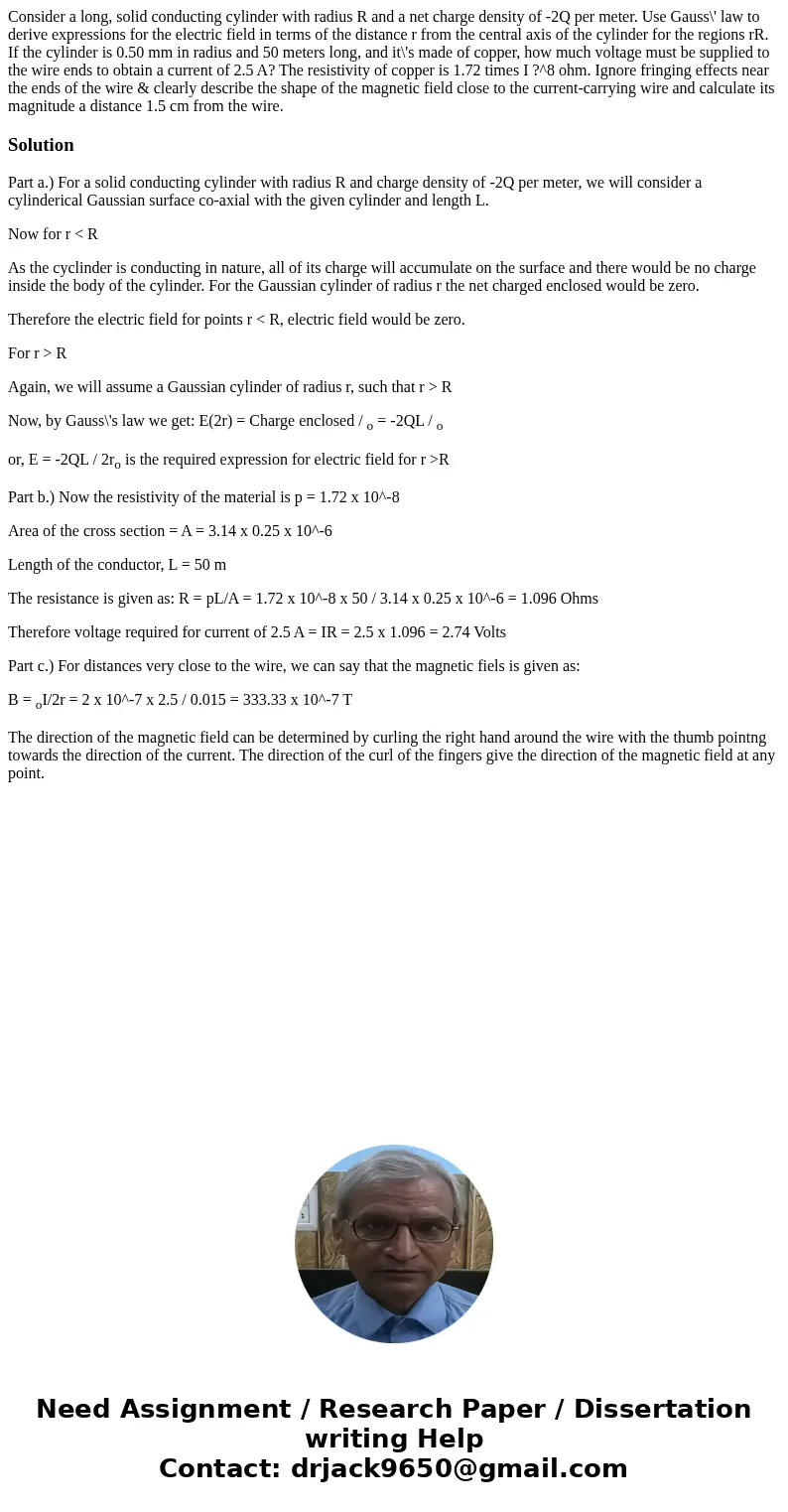Consider a long solid conducting cylinder with radius R and
Solution
Part a.) For a solid conducting cylinder with radius R and charge density of -2Q per meter, we will consider a cylinderical Gaussian surface co-axial with the given cylinder and length L.
Now for r < R
As the cyclinder is conducting in nature, all of its charge will accumulate on the surface and there would be no charge inside the body of the cylinder. For the Gaussian cylinder of radius r the net charged enclosed would be zero.
Therefore the electric field for points r < R, electric field would be zero.
For r > R
Again, we will assume a Gaussian cylinder of radius r, such that r > R
Now, by Gauss\'s law we get: E(2r) = Charge enclosed / o = -2QL / o
or, E = -2QL / 2ro is the required expression for electric field for r >R
Part b.) Now the resistivity of the material is p = 1.72 x 10^-8
Area of the cross section = A = 3.14 x 0.25 x 10^-6
Length of the conductor, L = 50 m
The resistance is given as: R = pL/A = 1.72 x 10^-8 x 50 / 3.14 x 0.25 x 10^-6 = 1.096 Ohms
Therefore voltage required for current of 2.5 A = IR = 2.5 x 1.096 = 2.74 Volts
Part c.) For distances very close to the wire, we can say that the magnetic fiels is given as:
B = oI/2r = 2 x 10^-7 x 2.5 / 0.015 = 333.33 x 10^-7 T
The direction of the magnetic field can be determined by curling the right hand around the wire with the thumb pointng towards the direction of the current. The direction of the curl of the fingers give the direction of the magnetic field at any point.

 Homework Sourse
Homework Sourse